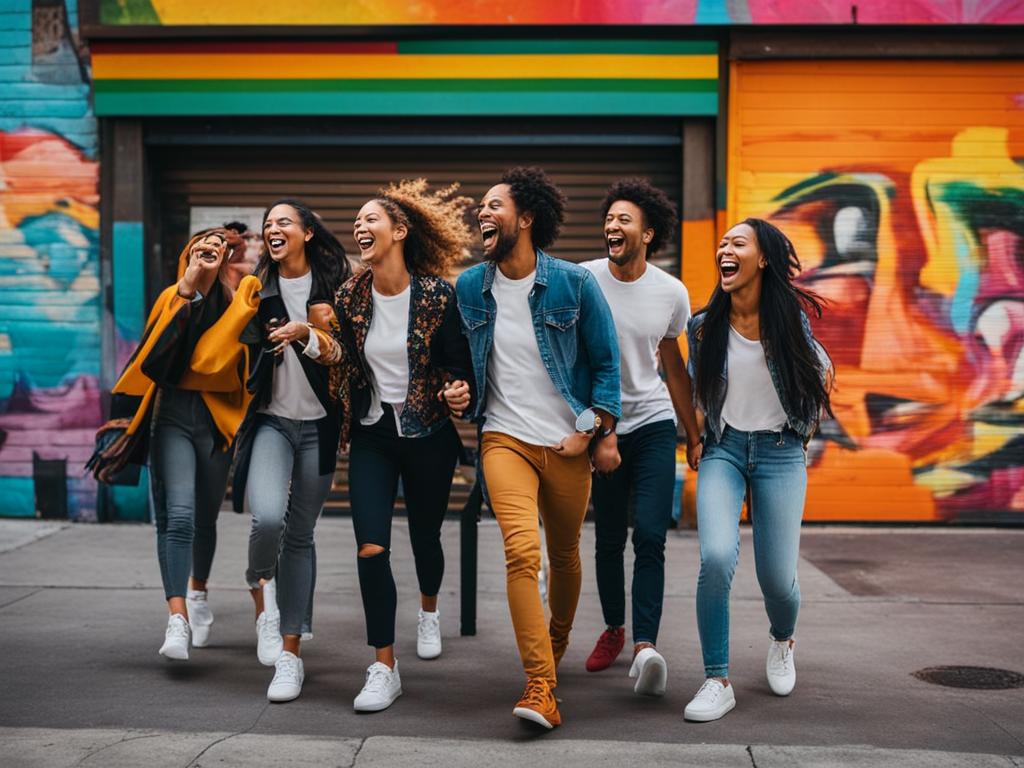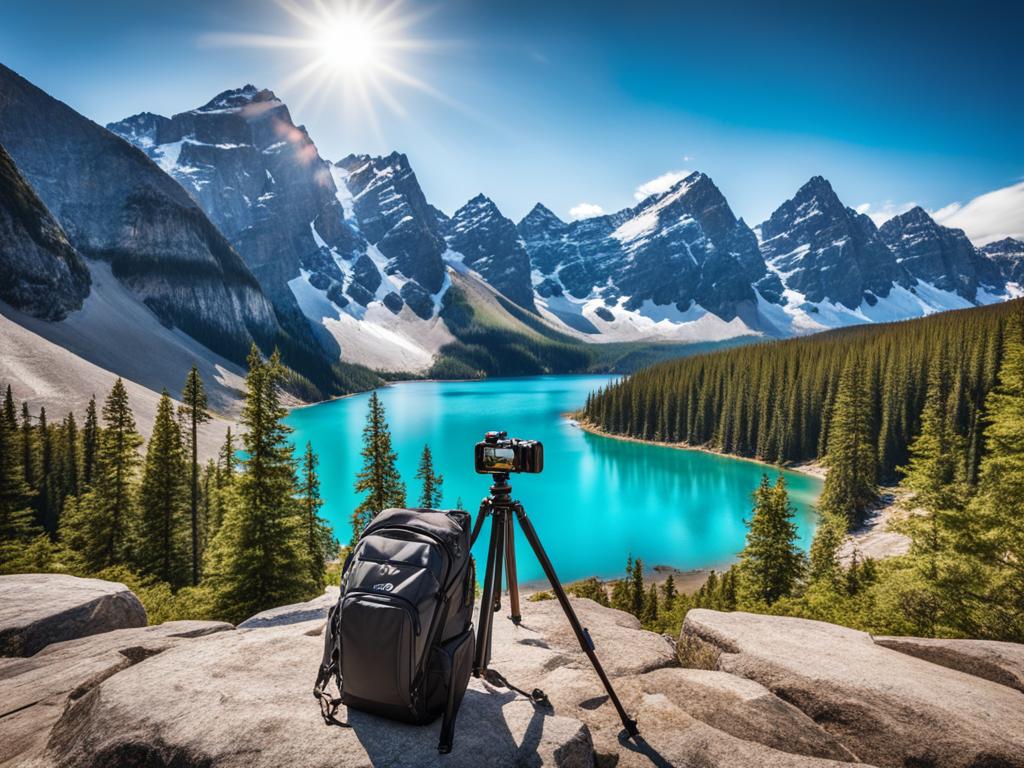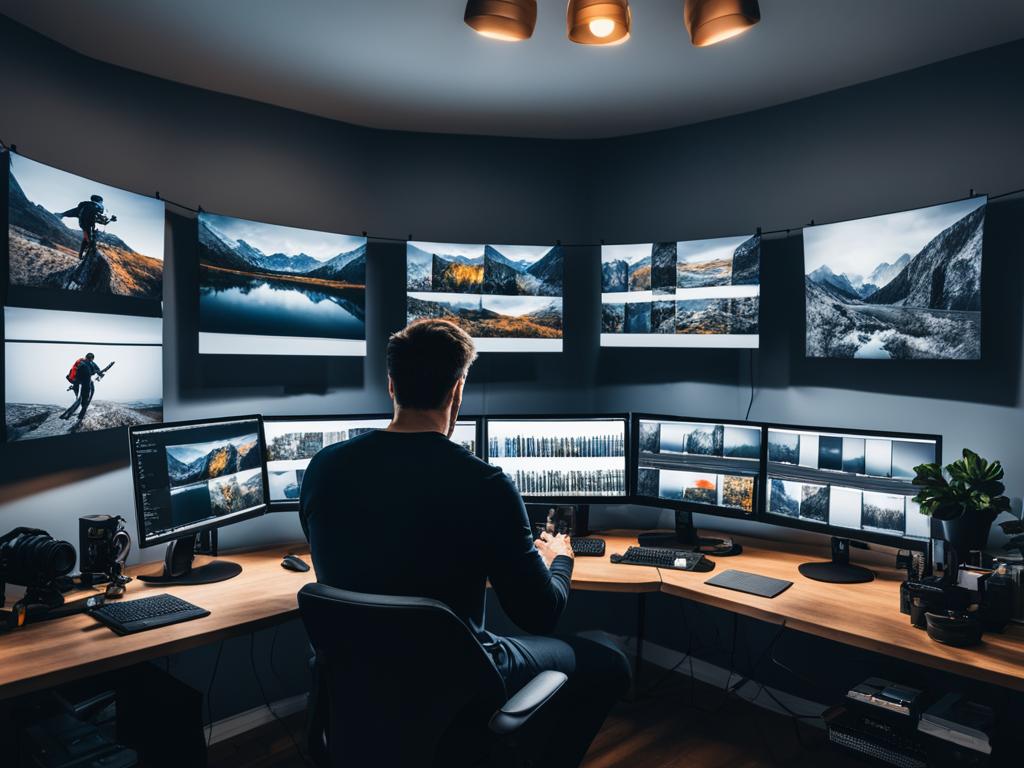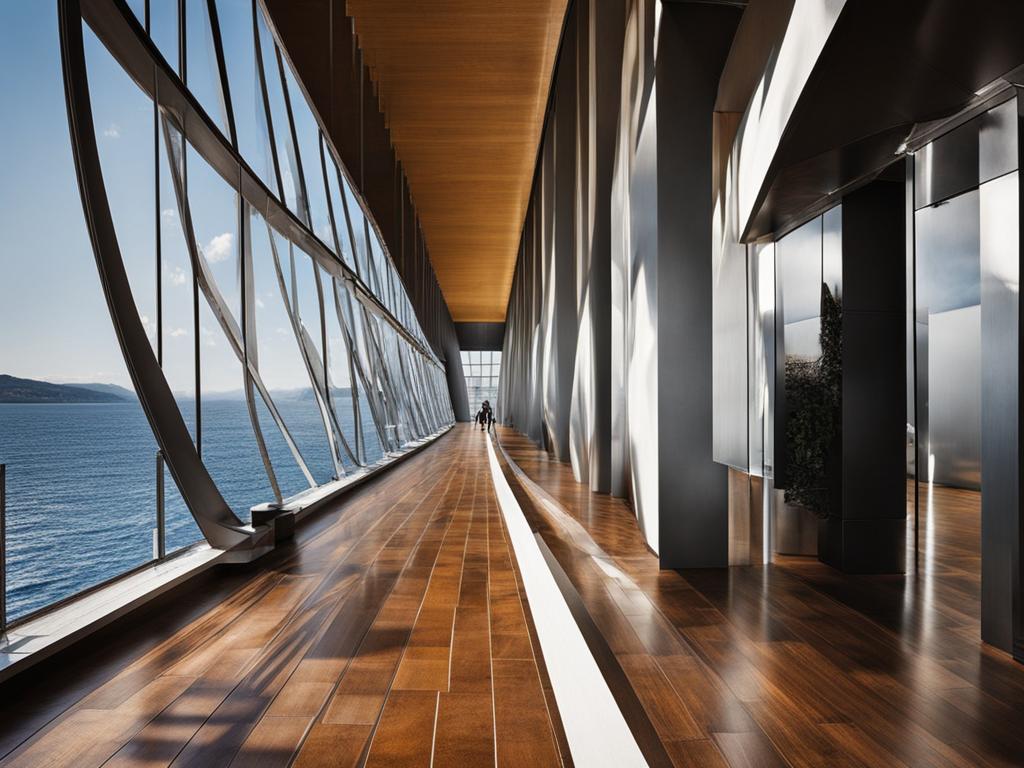As an avid photographer, I’ve always been drawn to the power of a candid moment. There’s an undeniable magic in capturing life as it unfolds—each snapshot a frozen testament to the genuine, fleeting emotions of our world. In my journey through the viewfinder, I’ve discovered that photography is not merely about the click of a shutter; it’s the art of observation, the craft of immortalizing the subtleties of life, and the careful manipulation of camera settings to create lasting memories. With a blend of photography techniques, strategic camera settings, and some insightful photography tips and tricks, even the most ordinary moments can be transformed into extraordinary memories.
Moreover, the artistry extends into the digital darkroom, where post-processing tips can illuminate or refine what the camera has captured, ensuring that the captured moments resonate with the authenticity they deserve. Through editing, the raw emotional content of candid photographs can be heightened, telling a story that goes beyond what meets the eye. Join me on this revealing exploration of photography, where technique meets instinct, and discover how to bring out the true beauty in your candid shots.
Key Takeaways
- Understanding the intricacies of camera settings can elevate the quality of candid photographs.
- Implementing photography techniques enhances the ability to seize unscripted moments with artistry.
- Developing an eye for storytelling frames each shot more than a picture; it is a narrative.
- Photography tips and tricks facilitate the anticipation of spontaneous events, capturing them with precision.
- Post-processing tips are integral for reflecting the true essence of the moment in your final image.
Understanding the Charm of Candid Photography
The art of candid photography is fundamentally the art of observation. It’s about finding the extraordinary in the ordinary and capturing the fleeting moments that express the quintessence of life. As a photographer, I have come to admire how candid photography offers a glimpse into the soul of the subject, and the environment they inhabit. Diving into this fascinating pursuit means honing a set of distinctive skills that differentiate a snapshot from a story.
Defining Candid Photography
At its core, candid photography embodies the unplanned, the spontaneous. It’s those shots taken discreetly, often without the subject’s awareness, allowing for pure expressions and genuine interactions to shine through. This genre of photography steps away from orchestrated scenes, embracing a more naturalistic approach that both beginner and advanced photographers find liberating and true.

The Unscripted Beauty of Genuine Emotions
An unspoken narrative unfolds in each candid shot where the genuine emotions play the lead role. Be it glee, contemplation, or shared laughter, these unplanned snapshots immortalize emotions in their purest form. To capture such authenticity, portrait photography tips suggest patience and a keen awareness of one’s surroundings, crafting an invisible bond between the photographer and the subject.
Candid vs Posed: The Art of Unstaged Shots
Contrasting the deliberate and often time-consuming nature of posed photography, candid photography thrives on the element of surprise. It illustrates life as it happens – unfiltered and unprompted. Tips for crafting such images involve mastering storytelling techniques that do not rely on poses but instead on the ability to anticipate and silently observe. This stylistic divergence challenges photographers to develop a sixth sense for the climactic, yet ordinary life events that are worth freezing in time.
- Embrace natural lighting for a softer, more authentic feel.
- Develop an eye for storytelling, capturing scenes that speak without words.
- Perfect the art of presence without intrusion, respecting the candid essence.
- Utilize advanced photography tips to adapt swiftly to changing scenarios.
Immersing oneself in the world of candid photography is not merely about mastering camera settings or the technicalities of composition; it’s about discerning and articulating the silent stories that emerge only when the subject forgets they’re being watched. It is this unchoreographed dance of reality that I find utterly captivating and strive to encapsulate through my lens.
The Right Gear: Select the Perfect Tools for the Job
When I embark on a photography expedition, particularly for landscape photography, I find that selecting the right equipment is pivotal to my success. The synergy between the camera settings and the environmental factors requires top-of-the-line gear tailored to the demands of the terrain.
Key Camera and Lens Choices
The heart of my gear is a reliable camera that can adapt to diverse lighting conditions and provide the control I need over camera settings. The Canon EOS 90D stands out with its versatility and responsiveness, making it an excellent choice for landscape photography tips I often share with fellow enthusiasts. Paired with a Canon EF 50mm f/1.8 STM lens, it delivers crisp, clear images that truly capture the essence of the landscape. For those using a Nikon system, I recommend the Nikon D7500 for its robust build and exceptional image quality when used with a Nikon AF-S DX Nikkor 35mm f/1.8G lens.
Accessorize for Success: Must-Have Photography Accessories
Achieving the perfect shot often depends on the accessories I bring along. Superior memory cards are non-negotiable for their capacity to store high-resolution images without compromising on the speed of capture. An external flash comes in handy when the natural light just isn’t enough, or when I want to eliminate those pesky shadows that can detract from a stunning landscape.
- External flash to enhance lighting and add depth to my photographs
- High-capacity memory cards to ensure I never miss a moment
- Battery grips for extended photoshoots without the worry of a drained battery
- Durable camera bags for secure and organized transport of all my photography gear
Combining these photography techniques with my trusted tools takes my craft to new heights, allowing me to capture breathtaking scenes with precision and ease.

Photography Tips and Tricks: Mastering Your Finesse
As a passionate photographer, I’ve learned that capturing those perfect, unguarded moments isn’t just about being there; it’s about being ready. With the right camera settings, photography techniques, and a keen eye for detail, you can create powerful narratives through your lens. In this section, I’ll share deep knowledge that will help you refine those candid captures into pieces of art.
Post-processing tips often make the difference between a good photo and a great one. It’s where your artistic touch can enhance or redefine the entire mood of the image. Whether adjusting the contrast or playing with color balances, post-processing unlocks a new dimension of creativity.
Understanding your camera settings is essential. Often, the difference in capturing a fleeting expression lies within knowing how to quickly adjust ISO, aperture, and shutter speed. A mastery of such settings lets you better handle the unpredictable nature of candid photography, where reactive adjustments are necessary.
When it comes to photography techniques, I embrace the power of patiences—much like a painter waits for the right stroke. Employing the burst mode function allows for capturing multiple expressions and movements, giving you a higher chance to catch that ‘one’ shot that stands out with emotional resonance.
Composition tips are crucial, even in the dynamic field of candid photography. The rules of thirds, leading lines, and the interplay of foreground and background are not just textbook theories; they are tools that when used instinctively, add profound depth to your imagery. A well-composed photo can lead the observer’s eye and evoke strong feelings, accomplishing the ultimate goal of any candid photograph.

- Keep an eye open for natural light. It can transform an image, casting ethereal glows or creating dramatic shadows that highlight the subject’s features.
- Anticipate the moment before it happens. Understanding human behavior and interaction can give you the edge in predicting when to take the shot.
- Stay unobtrusive. Blending into the background allows your subjects to remain relaxed and unaware, resulting in truly genuine expressions.
My goal is to inspire you to confidently explore and express your photographic practices. The combination of technical skills and creative vision can culminate in images that do more than capture moments—they tell stories.
Bringing Life to Your Photos with Composition and Framing
As I delve into the essence of what makes a photo truly stand out, I’m reminded that the heart of impactful imagery lies in its composition and framing. These are not just beginner photography tips, but essential photography techniques that elevate the visual narrative of your work. A strategically placed subject, the thoughtful inclusion of environmental elements, and a well-balanced scene can transform a simple snapshot into a piece of art that captures the viewer’s attention and emotion.

Composition Tips and tricks aren’t just rules to follow; they’re a creative toolbox for photographers to express their vision. I’ve found that employing these principles gives structure to the inherent chaos of candid moments, guiding the viewer’s eye and evoking a response. It’s this delicate balance of technique and artistry that sets an outstanding photograph apart from the rest.
Elements of Strong Composition in Photography
The journey to master photography composition begins with understanding its core elements. Here I share with you the foundation of framing a captivating image:
- The Rule of Thirds: Dividing the frame into a grid and placing key elements along these lines or at their intersections.
- Leading Lines: Utilizing natural lines to lead the viewer’s gaze through the photograph.
- Depth: Adding layers to create a three-dimensional feel and highlight your main subject.
- Balance: Ensuring that no single element overpowers others, but rather contributes to a harmonious whole.
- Negative Space: Leveraging empty areas to emphasize your subject and create a clean, uncluttered image.
Implementing Framing Techniques for Visual Impact
Once you have a grasp of composition, it’s time to accentuate your photos with framing techniques. These tools add depth and context, turning your snapshots into stories:
- Use natural frames, such as doorways or tree branches, to isolate your subject and draw focus.
- Incorporate environmental elements that contribute to the story you’re telling with your image.
- Experiment with over-and-underexposure to create mood and highlight texture.
By interweaving these photography tips and tricks with your unique artistic vision, your images will begin to resonate more deeply with your audience. They become not just photos, but vessels of meaning and emotion – and isn’t that the ultimate goal of every photographer?
Lighting Tips: Harnessing the Power of Light in Candid Photography
When it comes to candid photography, lighting isn’t just a detail—it’s a narrator. The way light plays across a scene can envelop it in ambience and emotion. Skilled photographers revel in the magic hours of dawn and dusk, utilizing the golden tones that lend a halo of warmth to their subjects. I’ve found that the softness of indirect natural light not only flatters but also paints a story in flattering hues, and it’s a strategy I consistently employ. Mastering lighting conditions, from diffusing harsh midday sun to capturing the serenity of twilight, sets an experienced photographer apart from the rest.
For those delving into the world of portrait photography, grasping lighting fundamentals is essential. The use of an off-camera flash or a diffuser to soften unwanted shadows can make a significant difference in the final image. Adjusting shutter speed, aperture, and ISO to harmonize with ambient light shapes an image’s mood, ensuring subjects are seen in their best, unguarded moments. Every portrait I shoot aims to convey the unique essence of the individual through their interaction with the light around them.
Beyond the realm of portraiture, in landscape photography, light dictates the drama and depth of each shot. From the undulating contours of land bathed in the first light of day to the elongated shadows cast during sunset—they all tell an unspoken tale. As a landscape photographer, I’ve learned that patience is truly a virtue; waiting for that perfect moment when the lighting conditions align can elevate a photograph from mundane to magnificent. To all who wish to excel in capturing exceptional candid moments, remember that harnessing the power of light is both a technique and an art form.
Lighting Tips: Harnessing the Power of Light in Candid Photography
What are some basic photography techniques every beginner should know?
Every beginner should understand the importance of the exposure triangle (aperture, shutter speed, ISO), how to compose a shot using the rule of thirds, and the significance of proper focus. It’s also crucial to get comfortable with your camera settings and practice taking shots in a variety of lighting conditions.
How can I improve my candid photography skills?
To enhance your candid photography, practice observing your surroundings and anticipate moments before they happen. Be discreet, use a longer lens to keep your distance, and learn to quickly adjust your camera settings without looking. Always be ready to capture the fleeting moments that convey genuine emotions.
What are some effective post-processing tips for photographers?
Key post-processing tips include adjusting exposure and contrast to bring out the details in your images, using color correction to create mood, and employing sharpening techniques judiciously to enhance texture without introducing noise. Additionally, cropping can be used effectively to improve composition post-capture.
What is candid photography?
Candid photography is the art of capturing people and scenes in their most natural and unguarded states, without posing or awareness of the camera. This type of photography is known for reflecting real emotions, expressions, and the rawness of a moment.
What makes the unscripted beauty of genuine emotions so appealing in photographs?
Genuine emotions captured in a photograph create a sense of intimacy and connection for the viewer. These unscripted moments are relatable and often evoke empathy and emotional responses, making the image more memorable and impactful.
What is the difference between candid and posed photography?
The key difference between candid and posed photography lies in the authenticity of the expression. Candid photos capture spontaneous, unposed moments while posed photos involve direction and styling to achieve a certain look or mood. Candid photos are often more powerful due to their authenticity.
What camera and lens should I choose for candid photography?
For candid photography, a camera with a fast autofocus system like the Canon EOS 90D or the Nikon D7500 is ideal. Pair it with a fast prime lens, such as the Canon EF 50mm f/1.8 STM or Nikon AF-S DX Nikkor 35mm f/1.8G, for a combination of portability, speed, and image quality.
What are some must-have photography accessories for a professional shoot?
Professional photographers should consider including an external flash for better lighting control, a sturdy tripod for stability, additional batteries and memory cards for extended shoots, and a high-quality camera bag for protection and mobility of equipment.
How can I develop an instinct for capturing the perfect candid moment?
Developing an instinct for capturing the perfect candid moment involves patience, practice, and constant observation of people’s interactions and behaviors. Work on being in the right place at the right time and be ready with your camera settings already dialed in so you can shoot quickly.
How can I improve the composition of my photos?
To improve your photo composition, consider the rule of thirds to balance your images, use leading lines to guide the viewer’s eye through the scene, and incorporate different perspectives to add depth to your photos. Practice looking at everything in your viewfinder to ensure every element contributes to the story you want to tell.
What are some framing techniques I can use to enhance visual impact?
Effective framing techniques include using natural frames like windows or arches, incorporating foreground elements to add depth, and layering different components in the scene to create a more dynamic composition. Be mindful of how these techniques can draw attention to your main subject.
What are some lighting tips for enhancing candid shots?
For candid photography, use natural light whenever possible, and if using flash, diffuse it to avoid harsh shadows. Being aware of the direction and quality of available light is crucial; look for soft, diffused light to flatter your subjects. Additionally, playing with shadows and highlights can add mood and depth to your photos.


